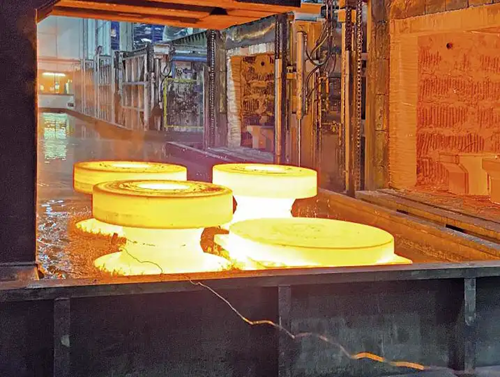
Knowledge
The Key Factor In The Formation of Cold Cracks In Steel - Hardening

Heat treatment is a crucial stage in the transformation of steel, and quenching, as the most core process among them, directly determines the performance of steel. What is hardening tendency? How does it affect the intrinsic quality of steel? Today, let's delve into this topic.
01 What is hardening tendency?
Figure 1 Quenching of steel materials
Hardenability is the inherent property of metallic materials, especially steel, to form a high-hardness and low-plasticity structure (mainly martensite) inside when subjected to rapid cooling processes such as welding or quenching in heat treatment. The greater this tendency, the more likely the material is to become hard and brittle after rapid cooling.
02 The Underlying Logic of Hardening Tendency
The hardenability of steel essentially reflects the ease with which its undercooled austenite transforms into martensite during cooling. This process mainly depends on two factors: 1. Chemical composition is fundamental: Carbon (C) is the most significant element affecting hardenability. The higher the carbon content, the easier it is to form high-carbon martensite, and the higher the hardness. Although alloying elements (such as chromium (Cr), molybdenum (Mo), vanadium (V), etc.) do not significantly increase the hardness after quenching, they can enhance the stability of austenite, inhibit the transformation of pearlite or bainite, and thereby promote the formation of martensite, which indirectly increases the hardenability. 2. Cooling rate is an external factor: The cooling rate must be greater than the critical cooling rate of the material to suppress other diffusion-type transformations and force the undercooled austenite to transform into martensite.
03 Main Risks Brought by Hardenability Tendency
The high hardenability tendency is highly concerned in welding mainly because it directly increases the risk of cold cracking (especially delayed cracking), which is of particular concern in CrMo steel for pressure vessels. The formation of cold cracking is the result of the combined effect of hardened structure, diffusible hydrogen and restraint stress.
o The hardened structure provides a crack-sensitive matrix: Martensitic structure is hard and brittle with poor plasticity, making it difficult to relieve stress through plastic deformation. It has many micro-defects, providing conditions for crack initiation.
o The role of hydrogen: Hydrogen atoms incorporated into the weld seam during welding diffuse and accumulate in stress concentration areas (such as the grain boundaries of martensitic plates) during cooling, generating huge pressure, causing material embrittlement (hydrogen embrittlement), inducing cracks and promoting their propagation. High-carbon martensite is highly sensitive to hydrogen embrittlement.
o The role of stress: Thermal stress caused by uneven heating and cooling of the welded joint, transformation stress due to the asynchrony of microstructure transformation, and structural restraint stress, together constitute the driving force for crack propagation.
Vigor has more than 20 years experience and the professional team in castings and forging as well as the post of treatment processes. If you have any question or products need to do, please feel free to contact us at info@castings-forging.com



